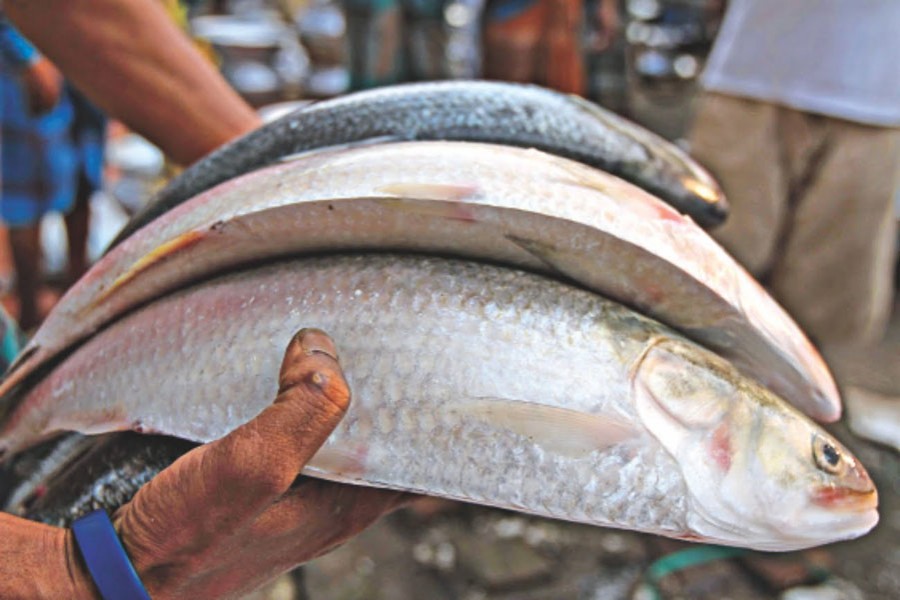Bangladesh Fisheries Research Institute (BFRI) has been carrying out intensive research to breed Hilsha in the hatchery using artificial methods.
The methods, which include producing larvae from eggs using artificial means, are being applied to increase the production of the national delicious fish, reports UNB.
BFRI in association with WorldFish, a Malaysia-based research organisation, has been conducting the research, said Dr Khan Kamal Uddin, chief scientific officer of Bagerhat Shrimp Research Station.
"We are trying to produce larvae from eggs collected from natural sources. However, we are yet to reach our destination. Once the research gets success, we will release two-three inch long Hilsha fries after proper nursing to coastal ponds or artificially-constructed pan," Dr Kamal added.
A mature mother Hilsha can release 300,000 to two million eggs throughout the year, said the scientist adding one egg out of every 1,000 eggs can produce larva while rest of the eggs get destroyed.
"The larva turns into jatka (fish fry) on its way to physical development. However, it takes at least two years to become a mature Hilsha and release eggs," Dr Kamal said.
"We assume that Hilsha change gender during their lifetime. Because most of the Hilsha more than 30 cm in length are female while all Hilsha over 40 cm are male. We are yet to start research on the matter," he added.
Meanwhile, the government has imposed a ban on netting, selling, preserving and transporting Hilsha fries (less than 25 cm) from November 1 to June 30 in a bid to ensuring a safe pasture for the physical development of the national fish.
However, the government will distribute 40 kg rice per month to every fisherman, who regularly catches fish in the sea, in March, April, May and June as part of food assistance to the fishermen in return for not netting Jatka, said Bagerhat district fisheries officer M Zia Haider Chowdhury.
Anisur Rahman, a fisherman of Rayenda village in Sharankhola upazila, said the fishermen catch Hilsha of different sizes as they use nets with large and small leaks.
If the government can shut down the production of nets with small leaks, the Jatka catching will be stopped subsequently.
Babul Khan, proprietor of Kalifa Ice Mill in Pathaghata upazila of Barguna district, alleged a group of fishermen in association with some corrupt government officials catch Jatka and sell those in the wholesale market during the ban.
According to the sources at the Fisheries Department, the country witnessed approximately 5.5 lakh metric tonnes of Hilsha production in the last fiscal.
However, the amount will be increased in the current fiscal year if the government can prevent fishermen to catch Jatka, the sources added.
It comes after a great number of hilsha released eggs without any inconvenience thanks to an earlier ban imposed by the government on catching the national fish from October 1 to October 22, the peak breeding period for hilsha.


